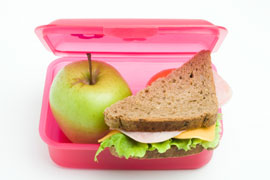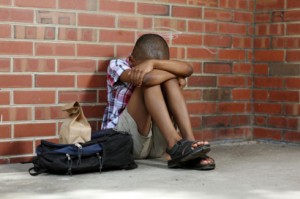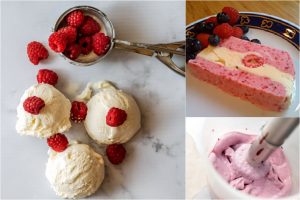A Litterless Lunch

Waste Reduction Week is October 18–24.
School lunches are a major source of waste in Canada. The average student’s lunch generates 30 kilograms of waste per school year—that’s a lot of juice boxes and snack cups thrown into our landfills!
The problem? Unfortunately, many of us have come to depend on the convenience products that are available to us, and nowhere is this more evident than in school lunches. Most parents pack lunch items in single-use plastic bags, aluminum foil, or wax paper, or they purchase single-serving items that come in their own disposable package. Much of the trash we generate comes from the packaging on the food we buy, and school lunches are the biggest culprits.
The solution? Start local! Many schools across the country have begun waste-free (or litterless) lunch programs and they’re truly making a difference.
A waste-free lunch program favours the use of reusable food containers, drink containers, utensils and napkins and discourages the use of disposable packaging, such as pre-packaged foods, plastic bags, juice boxes and pouches, paper napkins, and disposable utensils.
The challenge? In Ontario, METRO has teamed up with the Ontario Recycling Council for Waste Reduction Week to launch the Waste Free Lunch Challenge in schools across Ontario. Over 40,000 students have committed to bringing a waste-free lunch throughout the week and those children are eligible to win prizes.
Here are some more tips for packing a waste-free lunch:
- Pack sandwiches in reusable sandwich containers
- Pack fresh whole or cut fruits and vegetables in reusable containers
- Store cookies, fruit bars, granola bars, cheeses and fruit leathers in reusable containers.
- Purchase large containers of yogurt, cottage cheese, pudding or apple sauce and divide into reusable containers in lunch-size portions
- Pack wholegrain crackers, pretzels, and others snack foods in reusable containers
- Fill reusable drink containers from full-size containers in your fridge
- Send stainless steel cutlery or reusable BPA-free plastic cutlery
- Use cloth napkins instead of paper
- Send lunches in reusable lunchboxes or bags
Single-serving lunch or snack products are much more convenient (and fun), but are often double the price of lunch food items that can be bought in larger quantities (yogurt, drinks, cookies, applesauce, cheese). The packaging from the large containers can be left at home for reuse or recycling. Waste-free lunches are not only a wise environmental choice, but they are less expensive as well.
If you’re looking for more tips for packing waste free lunches and lunch ideas we’ve got more great articles on this topic to choose from:














